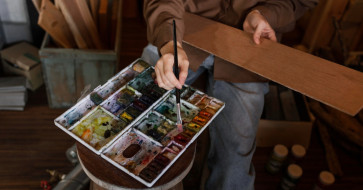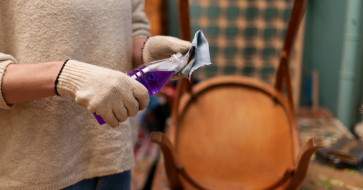Rustic furniture has a way of making a house feel like home. Every dent, knot, or weathered edge carries a little story. But here’s the thing—wood, no matter how tough, is still alive in a way. It responds to humidity, dryness, heat, and cold. Additionally, you must take good care of your beloved farmhouse table or reclaimed wood seat throughout the seasons if you want it to continue telling its tale for many years to come. Consider it similar to taking care of an old friend, with distinct requirements in the spring, summer, fall, and winter.
1. Spring: Time for a Little TLC
After months of dry indoor heat, your furniture is probably feeling a bit parched. Spring is the perfect time to give it a reset. Wipe down surfaces with a soft, damp cloth—no harsh chemicals, just something gentle to clear away dust and winter buildup. Then, feed the wood. A natural oil like beeswax or linseed oil soaks in like moisturizer on dry skin. Suddenly, that dull table looks alive again, ready for fresh flowers, morning coffee, and everything spring brings.
2. Summer: Shade and Balance Are Everything
Summer sounds lovely, but your rustic pieces don’t always agree. Direct sunlight fades wood faster than you’d think, and sticky humidity makes boards swell or warp. The trick? Keep furniture out of the sunniest spots or soften the light with curtains. Rotate your pieces now and then so one side isn’t always taking the hit. If your summers are humid, a dehumidifier keeps the air in check. Too dry? A small humidifier helps. It’s all about balance—your furniture will thank you with fewer cracks and less warping.
3. Fall: Get Ready for the Season of Gatherings
Fall is rustic furniture’s time to shine. Think of all the dinners, pumpkin pies, and late-night chats around the dining table. Before the season gets rolling, give your table and chairs a fresh coat of protective wax. That extra shield keeps spills and scratches from turning into permanent scars. Replace your fabric cushions with cozier, warmer coverings if you have some; the soft material will instantly transform the room into an autumnal setting. Your furniture can accommodate all the stories that fall has to offer with a little preparation.
4. Winter: Guard Against Heat and Dry Air
Winter is tough love for wood. Cold air outside and dry heat inside can pull moisture right out of your furniture. Keep rustic pieces away from radiators, fireplaces, or heating vents—too much heat in one spot can make the wood shrink or crack. Rugs under wooden legs help too, especially if your floors get chilly. And just like we slather lotion on dry hands, your rustic furniture loves a coat of conditioning oil in the winter months. When the air feels arid, it keeps the wood fed.
5. Everyday Habits That Go the Distance
Seasonal care matters, but the little daily things count most. Use coasters and placemats so spills don’t leave scars. Dust with a soft cloth instead of letting dirt settle into the grain. Wipe up messes right away—wood remembers. And here’s the best part: don’t stress about every scratch. Rustic furniture is supposed to live with you, not against you. Those small marks? They’re proof of life, the kind of character that makes rustic wood more beautiful with time.
Final Thought
Your rustic furniture doesn’t just sit in a room—it’s part of your life. With a little love through the seasons, it won’t just last; it will grow richer, warmer, and more personal year after year. Perfection isn’t the goal—longevity and character are. After all, the best rustic furniture isn’t flawless. It’s timeless.








